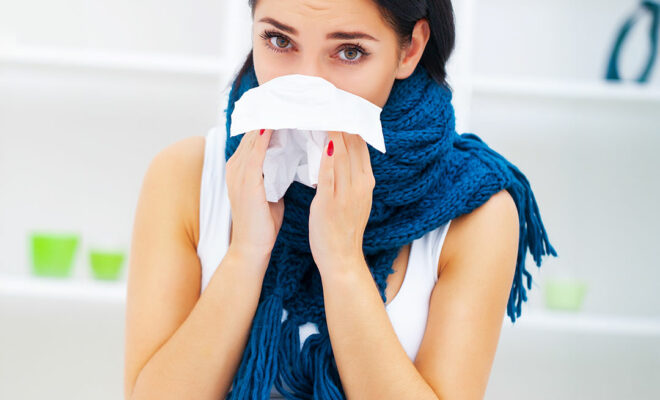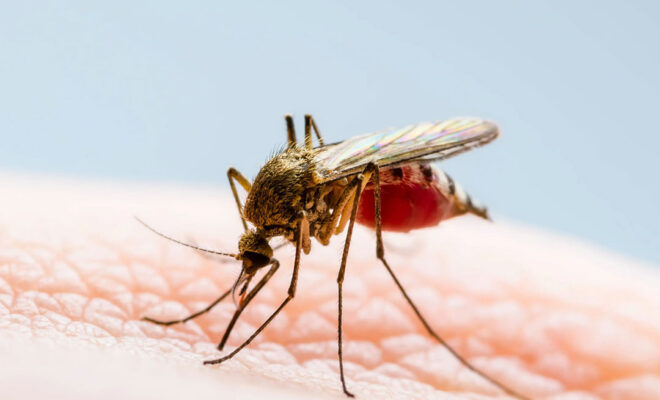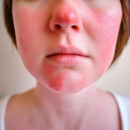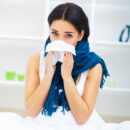Allergic Rhinitis (Spring Fever)
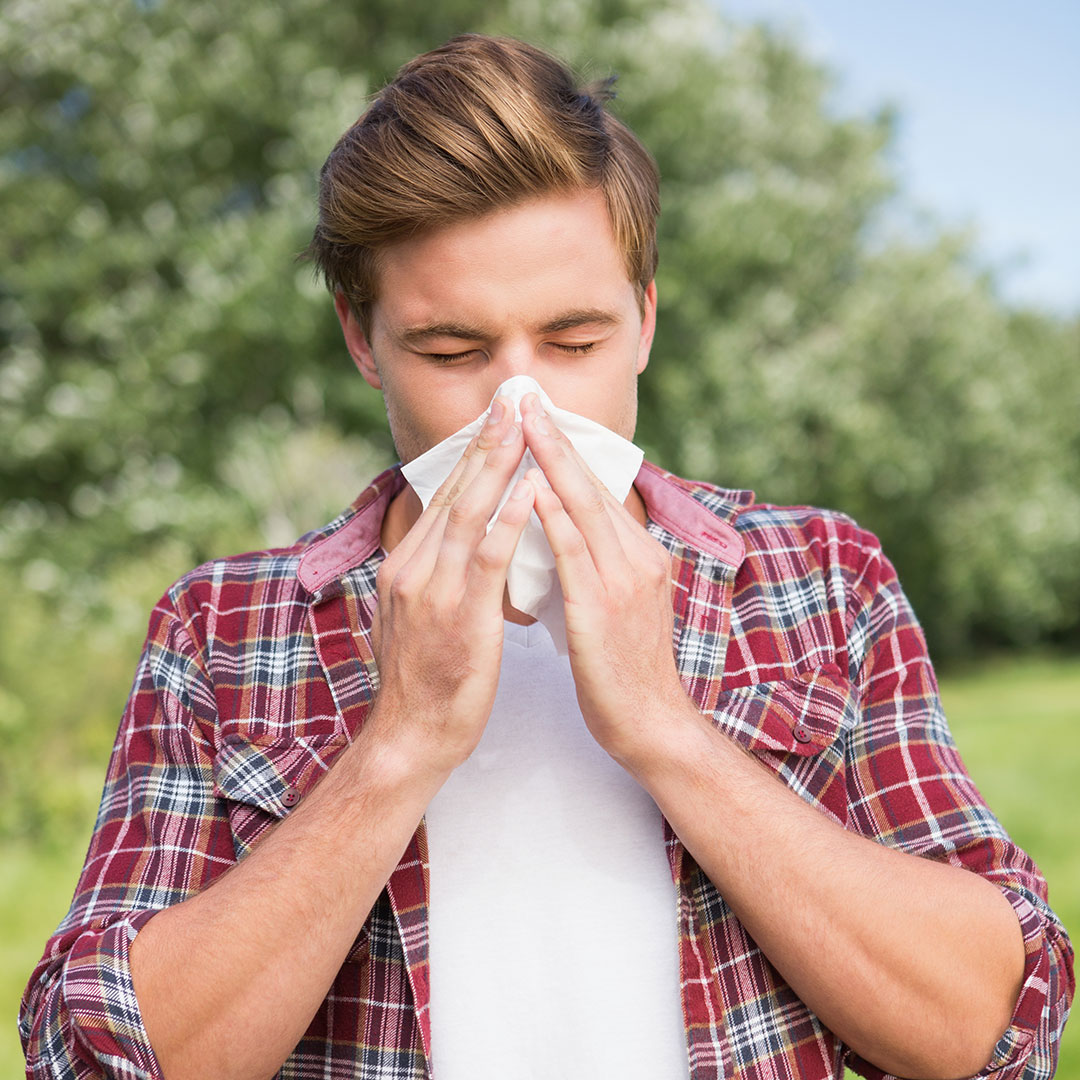
Spring fever, also called allergic rhinitis, causes cold-like symptoms. These may include a runny nose, itchy eyes, congestion, sneezing, and sinus pressure. However, unlike the common cold, spring fever is not caused by a virus. Spring fever is caused by an allergic response to a harmless outdoor or indoor substance that the body identifies as harmful (allergen).
Common allergens that can trigger spring fever symptoms include pollen and dust mites. Small patches of skin shed by cats, dogs, and other furry or furry animals (pet dander) can also be allergens.
In addition to making you miserable, spring cold can affect how well you perform at work or school and affect your life in general. But you don't have to put up with the annoying symptoms. You can learn to avoid triggers and find the right treatment.
Symptoms
• Runny nose and nasal congestion (congestion)
• Watery, itchy, red eyes (allergic conjunctivitis)
• Sneezing
• Cough
• Itchy nose, palate or throat
• Mucus running down the back of your throat (nasal discharge)
• Swollen, bruised-looking skin under the eyes (allergic brighteners)
• Extreme tiredness (fatigue), usually caused by insufficient sleep
Spring fever triggers
Spring fever signs and symptoms can occur throughout the year or are more intense during the spring season.
• Tree pollen common in early spring
• Grass pollen common in late spring and summer
• Common ragweed pollen in autumn
• Dust mites and cockroach droppings present throughout the year
• Danger from pets, which can be irritating year-round but cause worse symptoms when homes are closed in winter
• Indoor and outdoor fungal and mold spores, which can be both seasonal and year-round.
Spring flu or a cold?
The symptoms can be similar, so it can be difficult to tell which one you have.
spring fever: Generally, there is no temperature. There is a watery nasal discharge. It begins 1 to 3 days after exposure to allergens.
common cold : Runny nose with watery or thick yellow discharge, body aches, low grade fever. It begins 3 to 7 days after exposure to the common cold virus.
When to see a doctor
See your healthcare provider if:
• If you can't get rid of your spring fever symptoms
• If allergy medications do not provide relief
• If you have another condition that can worsen your flu symptoms, such as nasal polyps, asthma or frequent sinus infections.
Note: Many people – especially children – become accustomed to the symptoms of spring fever, so they may not seek treatment until the symptoms become severe. But getting the right treatment can provide relief.
Causes
When you have spring cold, your immune system identifies a harmless substance in the air as harmful. This substance is called an allergen. Your immune system is how your body defends itself, so it produces immunoglobulin E (IgE) antibodies to protect against this allergen. On the next contact with the allergen, these antibodies signal your immune system to release chemicals like histamine into your bloodstream. This causes a reaction that leads to spring fever symptoms.
Risk factors
• Having other allergies or asthma
• Having a condition called atopic dermatitis or eczema that irritates and itches your skin
• Having a blood relative, such as a parent or sibling with allergies or asthma
• Living or working in an environment that constantly exposes you to allergens such as animal dander or dust mites
• Exposure to smoke and strong odors that irritate the nasal lining
• Having a mother who smoked in the first year of her life
Complications
• Poor quality of life: Spring fever can prevent you from enjoying activities and make you less productive. For many people, it can lead to the absence of work or school due to the common cold.
• Poor sleep: Spring fever symptoms can keep you awake or make it difficult to stay asleep. This can lead to fatigue and a general feeling of discomfort (malaise).
• Worsening asthma: It can trigger asthma symptoms such as spring fever, coughing and wheezing.
• Sinusitis: Prolonged sinus congestion due to spring fever can increase your risk of developing sinusitis, which is an infection or inflammation of the lining of the sinuses.
• Ear infection: Spring fever in children is usually a factor of otitis media.
Treatment
Medication
• over-the-counter decongestants and antihistamines such as cetirizine (Zyrtec) and combination medicines containing acetaminophen, diphenhydramine and phenylephrine; (Nurofen)
• prescription medications such as steroid nasal sprays
In severe cases, your doctor may recommend an allergy shot. These are a type of immunotherapy that can help desensitize your immune system to allergens.
Some allergy medications can have unwanted side effects such as drowsiness, dizziness, and confusion.
Shop online for over-the-counter decongestants and antihistamines.
alternative treatments
Few studies have been done on alternative treatments for spring fever. Some people believe that the following alternative treatments can provide relief:
• contains quercetin, a flavonoid that gives color to fruits and vegetables
• Lactobacillus acidophilus is the “friendly” bacteria found in yogurt.
• spirulina is a type of blue-green algae.
• Vitamin C has some antihistamine properties
Prevention
There is no way to avoid catching spring cold. The best thing to do if you have spring fever is to reduce your exposure to the allergens that cause your symptoms. Before exposure to allergens, take allergy medications as directed by your healthcare professional.
Dr. Ali Al Sahli
Elite Hospital Emergency Service
Contact Us For Appointment:
Telephone line: 0392 444 3548 (ELIT)
Contact Form: https://www.elitenicosia.com/iletisim/

